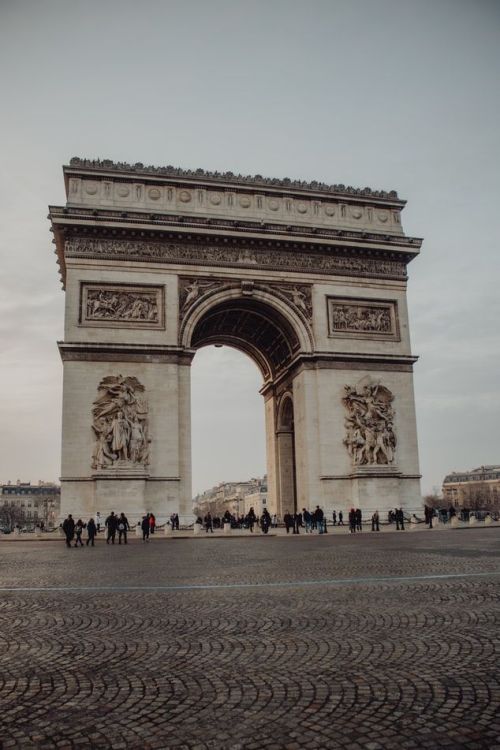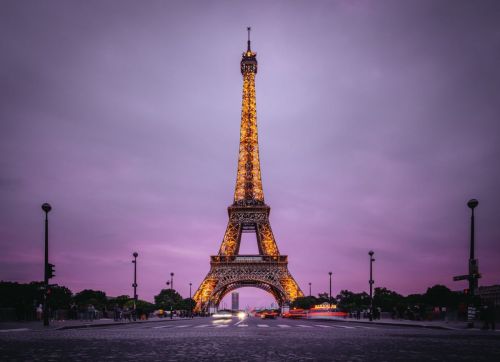The Museum d'Orsay is one of the most important museums in Paris, located in a former railway station on the banks of the Seine. It specializes in European art from 1848-1914 and its collection includes works by artists such as Van Gogh, Monet, Manet, Degas, Renoir. Among the exhibits there are paintings, sculptures, photographs and decorative objects.
The Museum d'Orsay is also one of the most visited museums in Paris, with approximately three million visitors a year.
It is housed in the former Gare d'Orsay, a railway station and hotel built in 1900. The station served as the terminus station for the Paris—Orleans railway. The Orsay Museum is located in the 7th arrondissement of Paris, on the left bank of the Seine, near the Louvre and National museum of the Legion of Honour and of orders of chivalry.
Built between 1810 and 1838, it was originally designed for the Ministry of Foreign Affairs, but eventually housed the Cour des Comptes (Court of Auditors) and the Conseil d'Etat (Council of State). Palais d'Orsay burned down during the night of May 23 to 24, 1871 during the Paris Commune.
The project was seen as an anachronism. At the time, trains were considered a modern innovation, so the new station was expected to be the embodiment of modernity. The Gare d'Orsay, on the other hand, presented a façade whose style harked back to the past while hiding the most advanced technology inside.
Inside there were 16 platforms, a restaurant, a banquet hall and a luxury hotel with 370 rooms.
Later, it served commuter lines, and during World War II, part of it became a postal center. It served as a collection point for prisoners of war and, after the war, as a center for receiving survivors of concentration camps upon their return - a plaque placed on the building from the Seine side informs about this.
After the war, only the hotel was used, where the poet Yvan Goll spent the last years of his life.
There was talk of demolishing it and building a new hotel in its place. However, it was decided to include it in the supplementary register of monuments and to create a museum there. The French Museums Directorate planned to use the old Gare d'Orsay station building as an exhibition space for art from the second half of the 19th century.
They wanted to create a unique museum complex with the nearby Louvre Museum, the Musée de l'Orangerie and the Grand Palais.
In 1978, the site was classified as a historical monument and the Musee d'Orsay was created one year later. During the construction work, care was taken to preserve the architecture of the Laloux building, the old structure.
The former station building was converted into a museum between 1980 and 1986. On December 1, 1986, the museum was officially inaugurated by the President and opened to the public eight days later (more than twenty thousand people visited on the first day).
Museum rooms covered by terraces were added to the main hall, which was largely exposed. Old stucco and iron ornaments were uncovered, and the existing glass roof was used to create a large, bright gallery.
Side galleries were created on both sides of the basement and mezzanine, one dark and one light. In the darker rooms of the museum, the more delicate works of art were placed. Other exhibition rooms were created at the level of the vaulted roof, facing the Seine.
The boundary dates of the works included in the collection were adopted - the year 1848 - the beginning of the Second French Republic and 1914 - the beginning of the First World War. In addition to Impressionism, the collection includes various works of almost all styles of the period and many individual artists of the 19th and early 20th centuries.
Among them was the collection of the Galerie Nationale du Jeu de Paume, whose building was intended for a different purpose. It was a rich collection of paintings, sculptures and drawings by French Impressionists. Many of the works came from the Louvre (works by artists born after 1820), as well as from the Musée National d'Art Moderne (now the Centre Pompidou), from which came works by artists born before 1870.
The glass-covered area in the museum makes up half of the total area of Buckingham Palace.
It is a boulevard on the left bank of the Seine in the 7th arrondissement of Paris, home to the Ministry of Foreign Affairs, called the Quai d'Orsay, and the Palais Bourbon, the seat of the National Assembly.
The Quai d'Orsay owes its name to Charles Boucher d'Orsay, French judge, advisor to the Parisian Parliament.
It happened on October 6 during the Nuit Blanche (the annual art festival) when vandals damaged Monet's painting Le Pont d'Argenteuil, tearing 10 centimeters of the canvas. Fortunately, the painting was restored.
Beneath it is a 1:100 scale model created by French set designer Richard Peduzzi, depicting an aerial view of the Paris Opera and its surroundings. This installation allows visitors to understand the urban planning of Paris at the time. It is one of the Muse's most popular attractions.
In the early 1960s, director Orson Welles filmed his movie "The Trial", based on Franz Kafka's book, and Bernardo Bertolucci's "The Conformist". A theater group led by Jean-Louis Barrault stayed there for several years.






